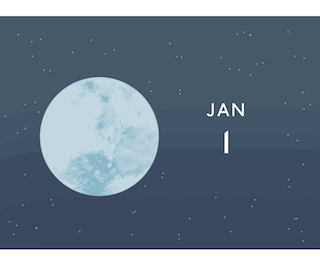It seems like people have been talking about lunar activity for months now. As many prepare to celebrate the Lunar New Year in February, lunar enthusiasts will tell you that 31st January is the date to look out for as the world prepares to witness a 3-in-1 lunar phenomenon.
Plan for an evening with family, friends and if you have access to one, a telescope, on 31st January! It’s time for the “Super Blue Blood Moon”.
While that’s not a real scientific term, it’s one that has caught on. On Wednesday night, the moon you see will be a supermoon, a blue moon and a blood moon — all in one. This one special moon can be seen through a telescope or by the naked eye, so the whole family can get involved.
We know it can all get pretty confusing, so we’ve created a mini guide to understanding this once in a lifetime event, the Super Blue Blood Moon, below.

A supermoon is a full moon when it is at its closest point during its orbit around our Earth. This is known as its perigee (say pair-rer-gee). At the point of perigee, the moon looks larger and more radiant than at other times during its orbit around Earth.

You may recall the phrase “once in a blue moon”, which refers to something that occurs infrequently. That’s exactly right! A blue moon occurs when there is a second full moon occurring within the same calendar month. Since this is only observed once every two and a half years, it’s pretty special!

A blood moon is also known as a total lunar eclipse; when a full moon is perfectly in line with the Earth and the Sun. When this occurs, the Earth blocks out the light from the Sun, casting a shadow on the moon. The result? The moon appears to give off an eerie, red light.
At The Learning Lab, Science students across Primary 2 to Secondary 4 are learning about the supermoon, blue moon and blood moon. By using specially curated handouts with images, examples and explanations, teachers help our students take a greater interest in the events that occur around them.
Giving students the chance to acquire the key knowledge, skills and dispositions to think and speak about global scientific events such as the Super Blue Blood Moon makes learning more meaningful.
Related Article: Putting The Spotlight On Primary 3 Science
In addition to teaching students content from the examinable school syllabus, our Science programmes aim to inculcate a deep love for the subject. When students see the relevance of what they learn to the world around them, they learn more meaningfully.
Join us today for our Science programmes, available for students from Primary 2 to Secondary 4. Find out more about our Science programmes by clicking here or on the link below.
Besides boosting your child's learning journey, you can now enjoy a rebate of S$88 on Term 1 fees* if you enrol your child in a core programme that begins by Thursday, February 15.
*Terms and conditions apply
Let’s keep in touch. If you have any questions, do contact us at 6733 8711 or enquiry@thelearninglab.com.sg
Don’t let the fun learning stop here. Check out these interesting articles and videos and learn more about the Super Blue Blood Moon.
Related Links:
Related Article On The Super Blue Blood Moon by Forbes
Related Article By Space.com on The Super Blue Blood Moon
Related Video: ScienceCast’s ‘A Supermoon Trilogy’